When it comes to city passes and travel cards, it’s usually fairly easy to figure out whether they would be worth it for you or not. For things like the Paris Pass or London Pass, they have a list of the most popular attractions and how much they cost, right there for you to see. The Swiss Travel Pass, however, is shrouded in mystery, or at least it was until I spent several days tracking down all of the prices and benefits.
A great many of the visitors and commenters on my popular page about where to go in Switzerland on a short visit are wondering whether the Swiss Travel Pass is a good deal. Embarrassingly, I’ve always had to answer that I found the pass too confusing to confidently advise people on. Now that has all changed, after literally days of research.
Note: This article was last updated in February, 2024.
Disclosure: This is a reader-supported website and some of the links are affiliate links where a small commission is paid to help keep this site going, but the cost to visitors is the same. The Swiss Travel Pass seems quite expensive at first, so it felt like it might be hard to get your money’s worth out of it. As it turns out, it’s pretty easy to get good value, and it’ll be a good deal for many visitors.
New in 2024
Prices increased an average of 5.9% from 2023 on the Swiss Travel Passes, but the Half Fare Card remains at CHF120, which is where it’s been for many years. Train fares in the country increased by similar percentages so the value is basically unchanged. There were no other notable changes to service or the included attractions and train routes.
>>>Buy the Swiss Travel Pass online
Where to stay in Interlaken and the Lauterbrunnen Valley
Since most people reading this will be visiting the Interlaken area and I get so many questions about it, I decided to write a detailed guide on which area to stay in while visiting this area.
>>>Where to stay in Interlaken or the Lauterbrunnen Valley in Switzerland
I included many huge photos in that post so readers will be able to get a better idea of what each place looks like and they are worth a look by itself.
>>>Lucerne or Interlaken: Which to visit and how long to stay?
The article just above will help you decide on how long to spend in each of Switzerland’s two best tourist areas.
Are you 100% sure where you want to go in Switzerland? This should help
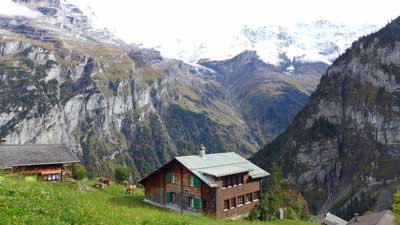
Zurich and Geneva are pleasant but dull. The good news is that Switzerland is packed with amazing sights and none of them are the big cities. If you aren’t 100% locked in yet, please read the article below and I think you’ll enjoy it.
Is the Swiss Travel Pass a good deal? Here's the short version

The bottom line is that the scenery, train journeys, and cable car rides in Switzerland are stunning and not found anywhere else in the world. They are also quite expensive if you pay for them one at a time. So no matter how you visit Switzerland, you are going to be paying quite a bit, or skipping the absolute best things that you’ve come there to see.
With good planning it’s quite easy to get great value out of a Swiss Travel Pass, but it might be a poor choice for those who don’t like to plan ahead. You can easily do a scenic train ride and a cable car in the same day, and still have time to do a scenic hike in the process.
First class or second class? Good news for most people
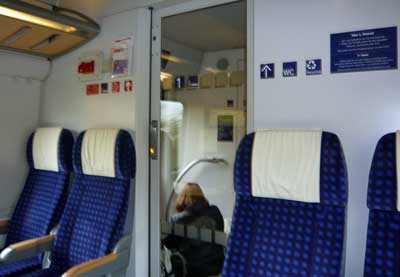
That said, Swiss Trains are literally the nicest in Europe and even the Second Class seats and carriages are nicer and roomier than trains in neighboring countries. The First Class seats are larger and nicer with only 3 across the cabin instead of 4, but honestly Second Class is perfectly comfortable for almost everyone.
Again, First Class on European trains like this is generally popular with business travelers where the company is paying and they need to get work done during the ride, and also senior citizens who don’t want to worry about a carriage full of backpackers. For most of the rest of us, Second Class is more than comfortable enough and the seat width and legroom compare to business-class airline seats. I’m a big and tall guy and I almost always travel in Second because it’s plenty comfortable enough and all the seats arrive at the same time anyway.
The longer you'll be in Switzerland, the better deal a Swiss Travel Pass will be
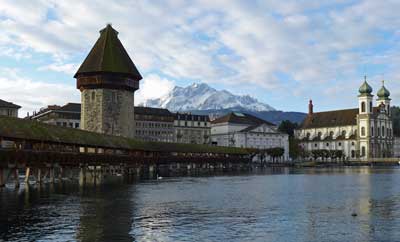
In other words, if you are staying 5 days or fewer, you have to do the math to determine your best option. But if you are spending even 6 or 7 days in Switzerland then the 6-day or 8-day Pass is almost guaranteed to be a great deal and your best choice. Once you have a Swiss Travel Pass you’ll absolutely love the ability to just hop on any train (excellent trains, always on time) and most boats and cable cars without having to worry about the cost. The per-day cost of an 8-day Pass even if you only use 6 of those days is about CHF65, and Switzerland is filled with amazing train rides and boats and cable cars that can get you that much value before noon each day.
Schilthorn (50% discount) and Jungfraujoch (25% discount) are cheaper with a Swiss Travel Pass
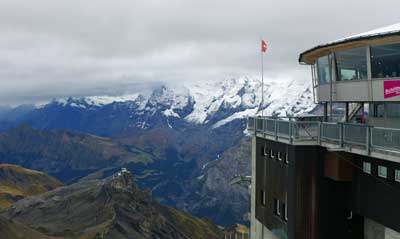
Both of those peak experiences are extraordinary and different from each other. Even so, compared to Jungfraujoch, Schilthorn is also faster and more comfortable on the way up and down. You can enjoy an excellent visit to Schilthorn in 4 hours or so (or a bit longer if you eat at the spinning Piz Gloria restaurant at the top), while a visit to Jungfraujoch requires closer to 6 hours.
NOTE: Schilthorn closes for maintenance for a week or two in late November most years.
Consider the Swiss Half-Fare Card instead
If you AREN’T going to be doing two or more of the long (and expensive) scenic train trips, you will get much better value out of the Swiss Half-Fare Card, which is explained a bit below.
Mt Rigi, near Lucerne, is 100% covered by the Swiss Travel Pass
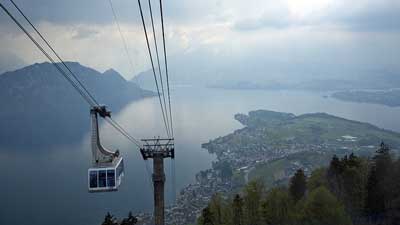
Is a Swiss Travel Pass right for you?
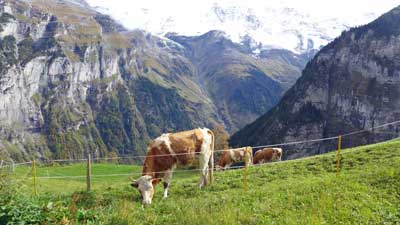
Most people only visit Switzerland for 5 or 6 days at most, so the 3-day and 4-day passes are the ones to focus on. But if you are staying for 8 days or more, those longer passes are almost certainly a great deal for you.
Long story short, if you plan on doing 2 of the more expensive scenic trains and the Jungfraujoch railway or the Schilthorn cable car, then the pass will save you money. Switzerland is expensive, but it’s worth it, and the travel pass can help make it a bit more affordable.
What the Swiss Travel Pass includes
- Free rail travel on normal trains and most scenic trains
- Discounted travel (about 50%) on popular tourist mountain trains
- Discounted travel (about 50%) on popular tourist cable cars
- Free travel on public transport in 75 towns and cities
- Free entry to around 500 museums in Switzerland
The Swiss Travel Pass covers the fare on the most popular scenic and panoramic trains. You can choose a normal seat in a regular carriage for no additional cost, but there is a supplement of CHF8 to CHF49 for a reserved seat in one of the special panorama carriages on these routes.
Prices of the 2024 Swiss Travel Pass
1st Class
- Adult 3-day Pass: CHF389
- Youth (4 to 25) 3-day Pass: 274
- Adult 4-day Pass: 469
- Youth (4 to 25) 4-day Pass: 330
- Adult 6-day Pass: 602
- Youth (4 to 25) 6-day Pass: 424
- Adult 8-day Pass: 655
- Youth (4 to 25) 8-day Pass: 469
- Adult 15-day Pass: 723
- Youth (4 to 25) 15-day Pass: 512
2nd Class
- Adult 3-day Pass: CHF244
- Youth (4 to 25) 3-day Pass: 172
- Adult 4-day Pass: 295
- Youth (16 to 25) 4-day Pass: 209
- Adult 6-day Pass: 379
- Youth (16 to 25) 6-day Pass: 268
- Adult 8-day Pass: 419
- Youth (16 to 25) 8-day Pass: 297
- Adult 15-day Pass: 459
- Youth (16 to 25) 15-day Pass: 328
Swiss Travel Pass Flex
This version costs a bit more, but you don’t have to use the travel days consecutively. It’s a great option for anyone who won’t be taking longer train rides each day.
- Adult 3 Flex days in 1 month (1st Class): CHF445
- Adult 3 Flex days in 1 month (2nd Class): 279
- Adult 4 Flex days in 1 month (1st Class): 539
- Adult 4 Flex days in 1 month (2nd Class): 339
- Adult 6 Flex days in 1 month (1st Class): 644
- Adult 6 Flex days in 1 month (2nd Class): 405
- Adult 8 Flex days in 1 month (1st Class): 697
- Adult 8 Flex days in 1 month (2nd Class): 439
- Adult 15 Flex days in 1 month (1st Class): 755
- Adult 15 Flex days in 1 month (2nd Class): 472
Where to buy the Swiss Travel Pass
The Swiss Half-Fare Card – A better option for many visitors
Far less confusing than the Swiss Travel Pass, you can instead get a Swiss Half-Fare Card, and it will be a better deal for many travelers. The price is lower and it’s much easier to do the math, and the discounts are greater on some things as well.
- Swiss Half-Fare Card for 30 days: Adults – CHF120 or US$129
What you get:
Those who buy the Swiss Half-Fare Card will get 50% discount on all trains, buses, and boats in Switzerland for up to 30 days, as well as 50% off all public transportation in 75 cities and towns.
>>>Buy the Swiss Half-Fare Card
Why the Half-Fare Card is a better deal for many
While the Swiss Travel Pass is a great deal for those doing many of the expensive scenic journeys and mountain sights within a few days, it’s not good value for those who are doing fewer of the expensive trips and/or those who are staying longer. Also, the Swiss Travel Pass only provides a 25% discount on the amazing Jungfraujoch Railway, which costs between CHF120 and CHF224 return depending on your starting point, while the Half-Fare Card provides a 50% discount.
The math is simple as well. You can just add up the cost of the trains, boats, and buses you’ll be taking while in Switzerland, and if the total is more than CHF240 or so, the Half-Fare Card will save you money.
Example itinerary:
- Zurich to Interlaken train (2nd Class): CHF50
- Schilthorn Cable Car: CHF112
- Jungfraujoch railway from Interlaken: CHF205
- Interlaken to Lucerne train (2nd Class): CHF33
- Mt Rigi roundtrip from Lucerne: CHF84
- Engelberg (near Lucerne) to Mt. Titlis Cable Car: CHF92
- Lucerne to Zurich train (2nd Class): CHF25
Total per person: CHF601
Total with Half-Fare Card (including price of card): CHF420.50
It would be tough to do all of those things in 4 days, although it is possible. If you bought a 4-day Swiss Travel Pass here is how it adds up:
4-Day Swiss Travel Pass: CHF259
Supplements for Schilthorn, Jungfraujoch, and Mt. Titlis: CHF203.25
Total cost: CHF462.25
Bottom line on the Swiss Half-Fare Card
Since the Half-Fare Card lasts 30 days and provides a larger discount on Jungfraujoch, it is better value for visitors who want to include that scenic top-of-Europe rail journey on their trip. The discounts also add up more quickly on Schilthorn and Mt. Titlis trips, just to name two examples, and you don’t have to take many longer rail journeys to get value out of the Half-Fare Card.
Swiss Saver Day Pass (A one-day unlimited travel pass)
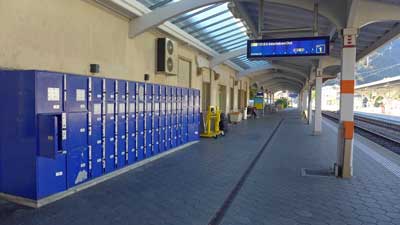
If you buy the Saver Day Pass at least 21 days in advance (and up to 60 days in advance) the 2023 cost is:
- 2nd Class (with Half Fare Card): CHF29
- 1st Class (with Half Fare Card): CHF82
- 2nd Class (with no Half Fare Card): CHF52
- 1st Class (with no Half Fare Card): CHF97
Once you research the normal cost of Swiss train fares you’ll see that the above prices are a very good deal for anyone riding more than 150 kilometers or so in a day. If you are just going, for example, from Zurich to Lucerne or Interlaken on a day, it’ll be cheaper to just buy that ticket individually. But if you are going from Geneva or Montreux to Interlaken or Lucerne then the Saver Day Pass will be much cheaper. Better still, you can use a Saver Day Pass to go from Interlaken to Geneva and back on the same day on the Goldenpass line and returning on the faster train through Bern, and it will still all be included for free.
If you don’t buy a Saver Day Pass at least 14 days in advance it’s more expensive, and if you only buy 1 to 3 days in advance it’s VERY expensive, so the key is to buy early. This is all confusing, but the Saver Day Pass should be a great option for many people only in Switzerland for one to three days.
Popular Swiss panorama scenic trains
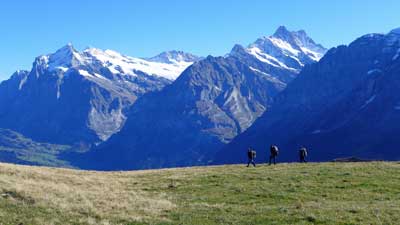
- Glacier Express
- Route: Zermatt to St. Moritz
- Train type: Panorama
- Journey time: 8 hours 3 minutes
- Distance: 291km
- 1st Class fare: CHF272
- 2nd Class fare: CHF159
- Compulsory seat reservation fee: CHF44 or 49
- Supplement for Swiss Pass holders: 13 to 33 for panorama carriage
- Bernina Express
- Route: Chur to Tirano and Lugano
- Train type: Panorama and bus
- Journey time: 4 hours 13 minutes and 3 hours 10 minutes
- Distance: 148km and 90km
- 1st Class fare: CHF113
- 2nd Class fare: CHF66
- Compulsory seat reservation fee: CHF32
- Supplement for Swiss Pass holders: 10 to 14 for panorama carriage
- GoldenPass Line
- Route: Lucerne to Montreaux
- Train type: Panorama
- Journey time: 5 hours 8 minutes
- Distance: 191 km
- Prestige Class fare: CHF131
- 1st Class fare: CHF96
- 2nd Class fare: CHF56
- Supplement for Swiss Pass holders: 8 to 15 for panorama carriage
- Gotthard Panorama Express (formerly Wilhelm Tell Express)
- Route: Lugano or Locarno to Lucerne
- Train type: Panorama and boat
- Journey time: 5 hours 21 minutes
- Distance: 182 km
- 1st Class fare: CHF164
- 2nd Class fare: CHF135
- Supplement for Swiss Pass holders: 39 to 49 for panorama carriage
- Swiss Chocolate Train
- Route: Montreux to Broc round trip
- Train type: Panorama or First Class
- Journey time: X hours X minutes
- Distance: 82 km
- 1st Class fare: CHF99
- 2nd Class fare: 89
- Supplement for Swiss Pass holders: 39
Popular Swiss scenic and theme trains
The scenic trains below are also extremely popular as sightseeing journeys rather than just as transportation, but can be used as both.
- Jungfraujoch round trip
- Route: Interlaken to Jungfraujoch
- Train type: special mountain train
- Journey time: 4 hours 41 minutes, round trip, plus time on top
- Distance: 73 km
- 1st Class fare: N/A
- 2nd Class fare: CHF224
- Supplement for Swiss Pass holders: 147 (so, a saving of CHF77)
- Gornergrat Railway
- Route: Gornergrat Railway
- Train type: Cog railway
- Journey time: 44 minutes return
- Distance: 10 km
- 1st Class fare: N/A
- 2nd Class fare: CHF90
- Supplement for Swiss Pass holders: 45
- Rigi round trip
- Route: Lucerne to Rigi
- Train type: Cog railway
- Journey time: 3 hours 25 minutes, plus time at the top
- Distance: 58 km
- 2nd Class fare: CHF78
- Supplement for Swiss Pass holders: None (this one is free with the pass)
- Mt Rigi Excursion (one-way and walk down)
- Route: Lucerne to Mt Rigi
- Train type: cogwheel train and/or cable car
- Journey time: 45 minutes up
- 1st Class fare: N/A
- 2nd Class fare: 49
- Supplement for Swiss Pass holders: 0
- Lotschberg Mountain Route and Centrovalli
- Route: Bern to Locarno
- Train type: Narrow gauge
- Journey time: 4 hours 40 minutes
- Distance: 212 km
- 1st Class fare: CHF158
- 2nd Class fare: CHF90
- Supplement for Swiss Pass holders: 5
- Jura round trip (Watchmaking Tour)
- Route: Neuchatel through Jura
- Train type: Regular
- Journey time: 3 hours 0 minutes
- Distance: 143 km
- 1st Class fare: CHF168
- 2nd Class fare: CHF108
- Supplement for Swiss Pass holders: 0
- Pre-Alpine Express
- Route: St. Gallen to Lucerne
- Train type: Regular
- Journey time: 2 hours 15 minutes
- Distance: 146 km
- 1st Class fare: CHF83
- 2nd Class fare: CHF47
- Supplement for Swiss Pass holders: 0
- Jura Foot Line
- Route: Basel to Geneva
- Train type: Regular
- Journey time: 2 hours 40 minutes
- Distance: 248 km
- 1st Class fare: CHF132
- 2nd Class fare: CHF75
- Supplement for Swiss Pass holders: 0
Popular Switzerland cable car rides
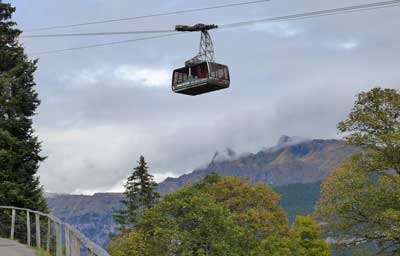
- Schilthorn
- Route: Stechelberg (Lauterbrunnen) to Schilthorn
- Train type: cable car
- Journey time: 1 hour
- 2nd Class fare: CHF108
- Supplement for Swiss Pass holders: 54
- Engelberg to Mt. Titlis cable car
- Route: Engelberg to Mt. Titlis
- Train type: cable car
- 2nd Class fare: CHF96
- Supplement for Swiss Pass holders: 46
The Swiss Travel Pass also includes free museum admission, but…
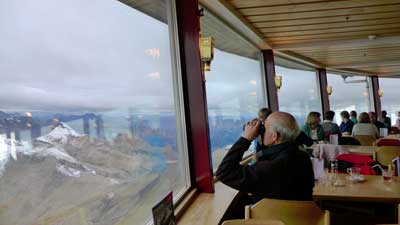
The problem is that the museums are only free on valid travel days, and almost no one would visit more than one or two museums with a Swiss Travel Pass. The trains and cable cars are so expensive that the pass gives very good value to cover those, so you don’t want to waste precious sightseeing time walking through a museum that only costs CHF10 anyway.
In other words, calculate the value of a Swiss Travel Pass on the travel savings only, and if you visit a museum here or there, then great. Most people are better off trying to squeeze in an additional train ride each day, and ignoring the museums. Switzerland is all about the outdoor scenery. As nice as the museums may be, they are not why you are there.
The pass includes free public transport in most Swiss cities
Similar to the free museum part of the offer, it’s best to ignore or minimize the value of free public transportation. It could be helpful in Zurich, but in most other Swiss tourist towns you won’t need much public transport. In fact, in Interlaken, each hotel or hostel guest automatically gets a card for free public transportation within the town (including between the two train stations).
So you might use a ride or two each day on public transport, but that won’t add up to much in terms of value of your Swiss Travel Pass.

Hey Roger , hope you are doing great . you have provided vast all relevant information which gives answers to most queries. Thanks for it . we are planning a 6 day trip to swiss, something like
day 1 ) trip to mount pilatus from alpnachstad and roaming lucerne in the evening
day 2) trip to interlaken and n then to schiltorn . also if possible a visit to harder kulm
day 3) trip to engelberg and mount titlis
day 4) lucerne to zurich , spend the day in zurich
day 5 ) zurich to bern . spend the day at bern
i am planning on taking the swiss half fare travel pass . Should i be booking this travel pass and the actual tickets say for example alpnachstad to mt pilatus in advance itself or is it ok to book on the day we are travelling at the station ?
we will be staying at alpnachstad ab
d zurich incase you might want to suggest few different things.i went over both swiss travel pass and the half fare pass n i came to a conclusion that the swiss travel pass costs me around 250chf for 4 days , plus half fare for pilatus , titles , kulm . i would be travelling to zurich and bern on the 5 th n 6 th day , so will have to take on spot train tickets without any discount. instead with the half travel pass i pay 120 upfront plus 101 for titles , pilatus and schiltorn , n regular train travel for 6 days , i guess it will mostly be the same
Aditya,
That looks like a very well planned trip. I’m sure you’d love it just as you planned it, but you might also consider doing Mt Rigi instead of Titlis or Pilatus, since it’s completely covered by the Swiss Travel Pass. And since Schilthorn is now totally covered it might save you some money doing it that way. But getting the Half Fare Card will also keep it reasonably priced, and that allows a discount on anything and everything.
With either the Swiss Travel Pass or the Half Fare Card it’s best to buy them online and print them from home for no delivery fee. You can buy them in Switzerland, but you might have to wait in a long queue at the airport or main train station once you get there. If you get the Swiss Travel Pass you don’t need to buy tickets for anything except for seat reservations in the panoramic carriages of certain scenic trains. You can just hop aboard and show your valid Pass to the ticket person when they come by. And for something like Schilthorn you just show your pass and they will let you on the cable car to the top. If you get a Half Fare Card you can buy train tickets online and just choose “half fare” when you are about to pay. It’s the top option in the discount pull-down thing. You can even buy tickets online before you have the Half Fare Card, and it’s only important to have a valid Half Fare Card at the time you are traveling and showing your valid ticket.
However, as for the mountain top attractions such as Schilthorn and Titlis, it’s best to buy your ticket when you get there. The thing is that the summer is the wet season in the Alps and it can be rainy or foggy any day of the year up there. Often it’s clear in the morning and foggy in the afternoon, or sometimes the other way around. So you should check the weather (there are webcams for all of these places and the locals can help you) and only go when you know it’s going to be nice. Jungfraujoch can sometimes be crowded after a day or two of bad weather, but most other things are just fine buying as you go. And domestic train tickets in Switzerland are always the same price, so you can buy those (at half price) when you are there as well if you prefer. Let me know if you have any other questions. -Roger
We are planning to travel to Switzerland as follows:
Day 1 Zurich to Lucrene
Day 2 Lucrene to Mt Philatius
Day 3 Lucrene to Jungfra
Day 4 Licence to Laussane
Day 5 Laussane to Bern
Day 6 Laussane to Geneva
Day 7 Laussane to Montrux
Day 8 Laussane to Paris
Will Swiss rail pass be better for 5 adults and two children below 10 years
Jairath,
Since you’ll be taking train rides every day and some of them are longer rides, I think the 8-day Swiss Travel Pass will be your best deal. It’s easier to get good value out of the longer travel passes than out of the 3-day version, and it will allow you to go more places and do more things since they will almost all be included. You might also consider doing Schilthorn instead of Jungfraujoch because Schilthorn (by cable car) is now fully covered by the Swiss Travel Pass, while Jungfraujoch only gives a 25% discount on the CHF205 fare. They are both spectacular and they face the same valley from opposite peaks. The children can travel free with the adults by getting a Swiss Family Card for free with the Travel Passes from the same place. Have a wonderful trip. -Roger
Hello Roger,
Thanks for your useful comments.I will revise my plan as below.I replace Zurich & Lech by Bern. You mention that Schilthorn is covered by Swiss travel pass.It means free return ticket up and down Schlthorn? How long does it take in Schilthorn. I dont I can combine Schilthorn with what place. Could you help review again on my plan. Thanks!!!!!
June 25, 2018: Paris – Roggliswil
June 26, 2018: Bern
June 27, 2018: Lucerne
June 28, 2018: Interlaken, Lauterbrunnen, Blausee
June 29, 2018: Lausanne then boat to Montreaux
June 30, 2018: Roggliswil – Paris
Lee,
Yes, the Swiss Travel Pass now covers the whole trip up to the Schilthorn observation deck as well as the James Bond attraction, which is pretty cool and a good use of 20 minutes or so. From Interlaken Ost train station it takes 20 minutes to reach Lauterbrunnen and a bus is waiting for each train, and that takes about 10 minutes to reach the bottom of the cable car station. The cable car leaves every 30 minutes and it takes a bit over an hour to reach the top. There is a revolving restaurant there with food prices that are similar to those in town, so it’s a nice place to eat and enjoy the view if it’s clear out. Including the James Bond thing you could be ready to go back down in an hour, or a bit longer if you eat. The bus from Lauterbrunnen goes right by a waterfall as well.
Your plan looks pretty good and the travel pass should really come in handy with all of those train rides. Let me know if you have any other questions. -Roger
Hi Roger,
My friend and I are traveling to Switzerland for the first time and are a bit overwhelmed. Here is our rough itinerary and ideally the places we’d like to go.
May 28 – Arrive in Zurich. Stay the night.
May 29 – Zurich, possibly Rhine Falls.
May 30 – Leave Zurich (early) to Grindelwald.
May 31 – June 1 – Explore the Grindelwald area (Lauterbrunnen, Murren, Schlithorn, Jungfraujoch and possibly Interlaken). We love waterfalls and love to hike so I think this is a good area to catch both.
We are debating between 3 different cards – Half Fare, Swiss Travel Pass or the Jungfrau Travel Pass.
It seems you talk about the HFC and STP frequently but never mentioned the Jngfrau Travel Pass. Any thoughts on the best bang for our buck?
Thanks in advance. I appreciate all the time and effort you put into your responses!
– Megan
Megan,
The Jungfrau Travel Pass is one of those regional passes that can be helpful for people staying in a small area, but aren’t good value for people visiting more than one area. It could be good for 3 days of travel in the Interlaken area, although it only gives a 50% discount on Jungfraujoch, which is the most expensive and most popular thing in the area. As of this year the Swiss Travel Pass covers the full trip up Schilthorn, which is the second most expensive thing in the area, and the Jungfrau Pass only gives you a 25% discount on it. The Half Fare Card is the best choice for most visitors because it gives a 50% discount on nearly everything in Switzerland. But as I always say, the only way to know which pass is best for you is to add up the various things that you’ll do and compare them.
You might also have a quick scan of my main article on where to go in Switzerland. I haven’t made it yet to Rhine Falls, although I hear it’s nice. But the main point is that unless there are specific things you want to see in Zurich, you might want to minimize or cut out your time there. It’s a pleasant (and very expensive) city, but really the “magic” of Switzerland is the amazing scenery and specifically the Alps. It would be a bit like going to a famous national park like Yosemite or Yellowstone and then spending most of your time in the little village where the hotels are rather than in the most beautiful areas of the park.
As always, let me know if you have any other questions. -Roger
Hello Roger,
I will have a business trip to France and take chance to visit Switzerland. I will live in my friend house in Roggliswil and have a day trip to all spots as below. It means I will come back Roggliswil in evening daily.
My intention: buying a Swiss Travel pass for 4days 26-29/June. I will buy ticket for The round trip from Paris to Roggliswil on 25 and 30 June separately. Do you any advices for me? Thank you very much!
My schedule:
June 25, 2018: Paris – Roggliswil
June 26, 2018: Zurich +Lechtenstein
June 27, 2018: Lucerne
June 28, 2018: Interlaken, Lauterbrunnen, Blausee
June 29, 2018: Lausanne then boat to Montreaux
June 30, 2018: Roggliswil – Paris
Lee,
Having a free place to stay in Switzerland is a huge bonus. I think your plan to buy a Swiss Travel Pass sounds very good because with a base like that you’ll be on the trains a lot. You might have a scan on my main article on where to go in Switzerland. Unless you have something specific you want to see in Zurich, I’d say skip it and spend more time on the natural beauty. Bern is a more interesting city and more scenic as well, so you might consider that.
I haven’t made it to Liechtenstein yet and that’s mostly because people seem to agree that it’s a pretty dull place. Honestly, the only reason to go (according to experts) is to be able to say you’ve been there. Otherwise it’s a small city in a valley that looks just like the other towns around it. I’d focus more on the Interlaken area because that’s where most of the major thrills are located. If you buy a Swiss Travel Pass you can go up Schilthorn for free, and that is an excellent half-day trip by itself. You might get other ideas from that article. Let me know if you have any other specific questions. -Roger
Hi Roger
I am planning to arrive Interlaken on 3 Dec 2018 from Munich. Will be taking the train. will be staying in
Interlaken – 6 nights. 2 mountain rides Jungfraujoch and First (in think HarderKlum). Will be taking train to Bern, Laussane and Grindewald. Please advise if I should buy the full fare or half fare. Thank you. We are 2 adults and 2 seniors.
Arstiah,
My best guess is that the Swiss Travel Pass will save you more, but you’d really have to add up the things you’ll do to be sure. With 6 days it’s pretty easy to get enough use out of a Travel Pass because you’ll be using it several times each day on trains and cable cars and such. And now that it fully covers Schilthorn, that alone is worth around CHF105 per person. One great thing about the full pass compared to the Half Fare Card is that you get the big expense taken care of up front, so when you are there you’ll be motivated to do as many things as possible to get the best value. With the Half Fare Card you still have to pay 50% for each thing, so you might start skipping things to save money. Switzerland is a wonderful place for a splurge on activities, and if you can afford the Travel Pass I’d do it. -Roger
Hello Roger,
I am planning to visit Switzerland towards the end of May.
1. 1 day in Montreux
2. 2 day in Interlaken and surroundings
3. 1 day in Lucerne
4. 1 day in Zermatt
I am interested in beginners skiing, some little adventure activities and visiting lakes and mountains.
Please help if I should get a SWISS pass or a half fare pass ?
I am a hard care drive fan but scared after reading about parking charges and car free villages.
thanks
Rijok
Rkr,
I know what you mean about driving and those parking fees. Most of Europe actively tries to discourage self-driving with those high parking fees and such, but fortunately the trains are excellent and very punctual (in Switzerland). As for which card to get, it really depends on the specific things you’ll be doing in each of those places. For example, in the Interlaken area there are two expensive and amazing peak views in Schilthorn and Jungfraujoch. Schilthorn is now fully covered by the Swiss Travel Pass, while Jungfraujoch is only a 25% discount with the Swiss Travel Pass. So if you do Schilthorn the full Pass makes a lot of sense, but if you want to do Jungfraujoch then the Half Fare Card (including a 50% discount on Jungfraujoch) makes more sense. Long story short, it all depends on which specific things you’d do while you were there. Let me know if you have any other questions. -Roger
Dear Roger, (resubmit with correction)
Thanks for your time and effort!!
I was about to book the hotels, i have to fix the plan and book the hotels accordingly.
Do you mean not to book the hotels in advance?
i read there are options to go up to Titlis by train and by cable car. which one is better.
Kindly the places to visit in Engelberg
Anoop,
I prefer to book my hotels in advance, usually as soon as I’m sure of the dates. The best places tend to fill up early any time of the year. For Mt. Titlis you go up and down by train. For Mt. Rigi there is a cable car and a cogwheel train, and most people go up one and down the other.
I’m not an expert on Engelberg and I really don’t like to plan specific parts of people’s days because tastes and budgets are different. I’m sure you can find a list of things to do there by Googling it. Have a great trip. -Roger
Dear Roger,
Really awesome blog. its Very informative.
we are 4 adults and 2 infants (18 months each) arriving at Zurich airport at 9:30 am of 2nd May 2018 ( Wednesday) and our return flight is on 5th May 2018 10:00 PM (saturday) – 4Days and 3 night
I am really worried about this trip as this is our first trip to swiss moreover with 2 infants.
We wish to visit the following.
1) Titlis
2) Schilthorn Cable Car AND/or Jungfraujoch (WORRIED OF ALTITUDE SICKNESS FOR INFANTS)
My most probable itinerary would be
Day 1: 2nd May – Zurich to Interlaken (reach interlaken by 1:30 pm settle at the hotel and move to Schilthorn or Jungfraujoch (possible ?)
stay at Lauterbrunnen
Day 2: 3rd May – Suggestion required (what else to visit in Lauterbrunnen interlaken area. we are nature lovers)
stay at Lauterbrunnen or interlaken
Day 3: 4th May – from Lauterbrunnen or interlaken to Engelberg hotel and then to Titlis
stay at Engelberg
Day 4: move to lucern (store luggage somewhere) and suggestions required.
Roger, please help me to make my itinerary better and include the most scenic places that i must visit in these areas (lucern or interlaken or Engelberg (or all).
Also advise the which rail pass i should select?
Please….
Anoop
Anoop,
I’m glad you find this helpful. Your plan looks quite good and I’ll answer in order…
I’ve heard of infants having altitude discomfort in planes flying 10,000 meters, but the peaks around Interlaken are under 3,500 meters. Hopefully you can find information on this elsewhere, and I really hope it’s not an issue.
On Day 1 you could go up Schilthorn after arriving at 13:30. The cable cars leave every 30 minutes and keep going into the evening. It takes about an hour from the bottom to the top. The last train up to Jungfraujoch leaves in the early afternoon so you probably wouldn’t make that. Check the weather at the top before you go up either though, because it can be foggy any day of the year and there is no point in going if you are in a cloud when you reach the top.
As for Day 1 there are many great options all over that area, and you might end up doing one of the peaks on that day if the weather was not good in the afternoon of Day 1. I don’t like to give out specific plans for days, but I will say that there is a lovely and famous hike that is reached from the short cable car ride up behind the nearby town of Wengen, which is reached by a cogwheel train. Most people hike down hill from there to the next stop down, so it’s quite easy. But there is an uphill hike from the cable car stop to the highest peak just to its left. You should also Google “things to do in the Interlaken area” or something like that and you’ll find many other choices.
There are luggage lockers at all larger train stations, including Interlaken Ost and West and Lucern.
Again, the weather can be unpredictable more than a few hours in advance so it’s best to have a list of things you’d like to do, and try to do the major ones as soon as you know the weather is good. You might have to shuffle things around a bit, but you should have time for all the major highlights. If it’s cloudy or rainy on the mountain tops it usually only lasts a few hours, and you can explore the towns or even head over to Bern, which is one hour away from Interlaken by train and a nice place to spend part of a day.
As for rail passes are concerned, I would have recommended the Half Fare Card and it still might be your best bet, but now that the Swiss Travel Pass fully covers Schilthorn it might be worth looking into. It only gives a 25% discount on Jungfraujoch, however, so if you’d prefer to do that one instead the Half Fare Card with its 50% discount would be better. One nice thing about the Swiss Travel Pass is it allows you to take most of the cogwheel trains and cable cars for free, and that can add up quickly. Let me know if you have any other questions. -Roger
Hi Roger,
It would help me if I travel from Bern to Geneva on Day 5.
It may not help me if I am in staying in Montreux on Day 5, as the ticket fare seems to be less.
Little confused with itinerary based on Swiss travel pass.
Regards
Santhosh